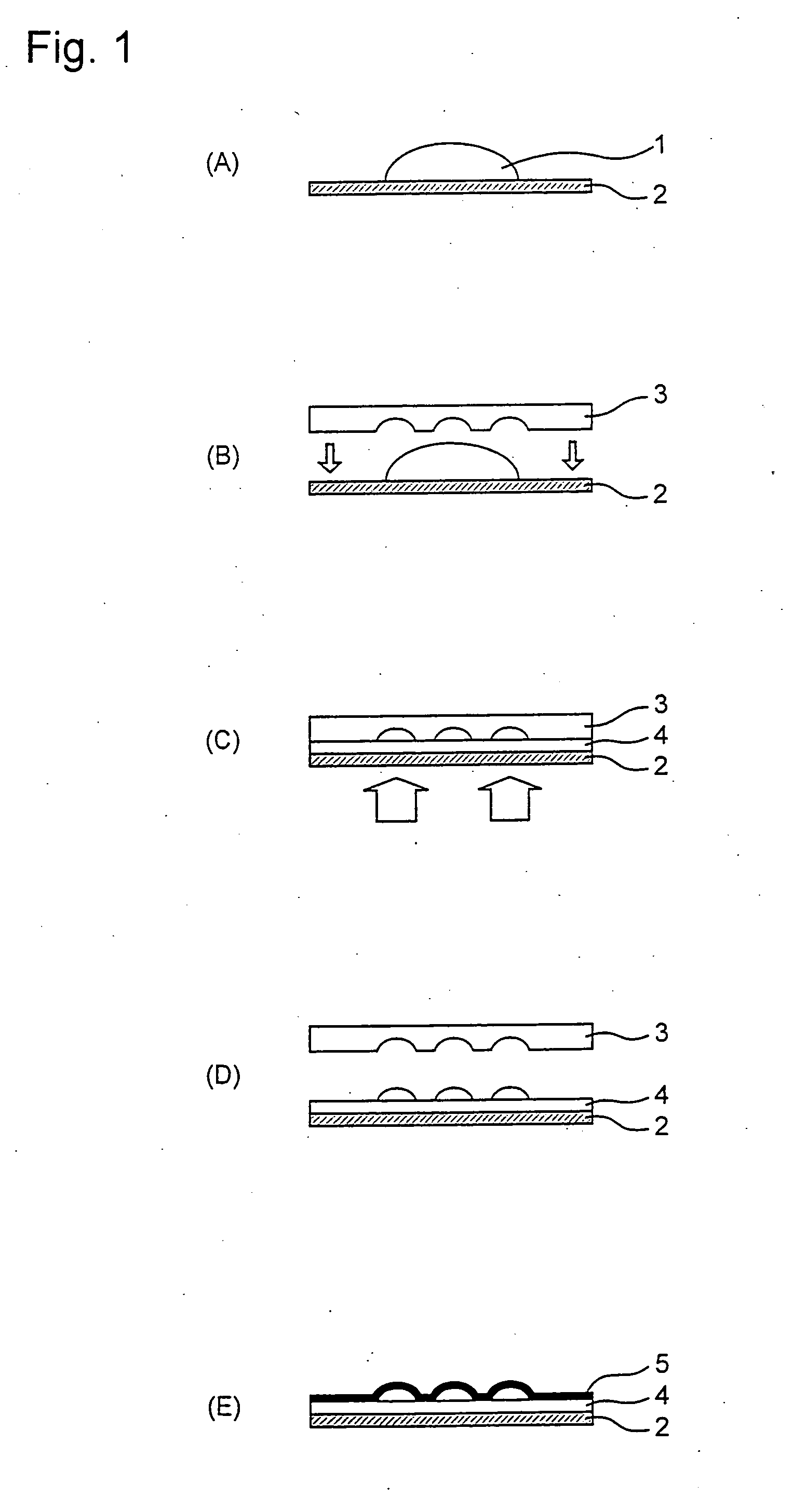Microlens
a microlens and lens technology, applied in the field of microlens, can solve the problems of inability to form a hardcoat layer at a uniform thickness on a finely and complicated product such as microlens, and achieve the effects of preventing cracking of the inorganic compound layer itself, preventing cracking of the base lens material itself, and preventing wrinkling effectively
- Summary
- Abstract
- Description
- Claims
- Application Information
AI Technical Summary
Benefits of technology
Problems solved by technology
Method used
Image
Examples
examples
[0077] (Preparation of Microlens)
[0078] Polymerizable monomers and silica sol were mixed in the amounts (by weight) shown in each of Tables 1 to 4, and the solvent derived from silica sol was removed under reduced pressure, to give each polymerizable composition. When a silane-coupling agent (MPS or ESC) was added, the silica sol and the silane-coupling agent were mixed at the weight ratio of silica to the silane-coupling agent shown in each Table, and the mixture was stirred for 24 hours, before the polymerizable monomer and the silica sol were mixed. The weight rate of silica in each Table is a weight ratio of the silica sol solid matter.
[0079] Then, a base microlens material was molded by using each of the polymerizable compositions by a stamper method. Specifically, a polymerization initiator was added to the polymerizable composition to a predetermined amount, and the polymerizable composition was applied on a glass plate in an amount of several grams and pressed with a stamp...
PUM
| Property | Measurement | Unit |
|---|---|---|
| diameter | aaaaa | aaaaa |
| particle diameter | aaaaa | aaaaa |
| particle diameter | aaaaa | aaaaa |
Abstract
Description
Claims
Application Information
 Login to View More
Login to View More - R&D
- Intellectual Property
- Life Sciences
- Materials
- Tech Scout
- Unparalleled Data Quality
- Higher Quality Content
- 60% Fewer Hallucinations
Browse by: Latest US Patents, China's latest patents, Technical Efficacy Thesaurus, Application Domain, Technology Topic, Popular Technical Reports.
© 2025 PatSnap. All rights reserved.Legal|Privacy policy|Modern Slavery Act Transparency Statement|Sitemap|About US| Contact US: help@patsnap.com


